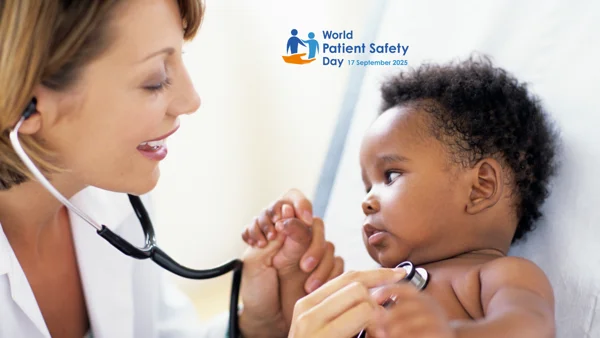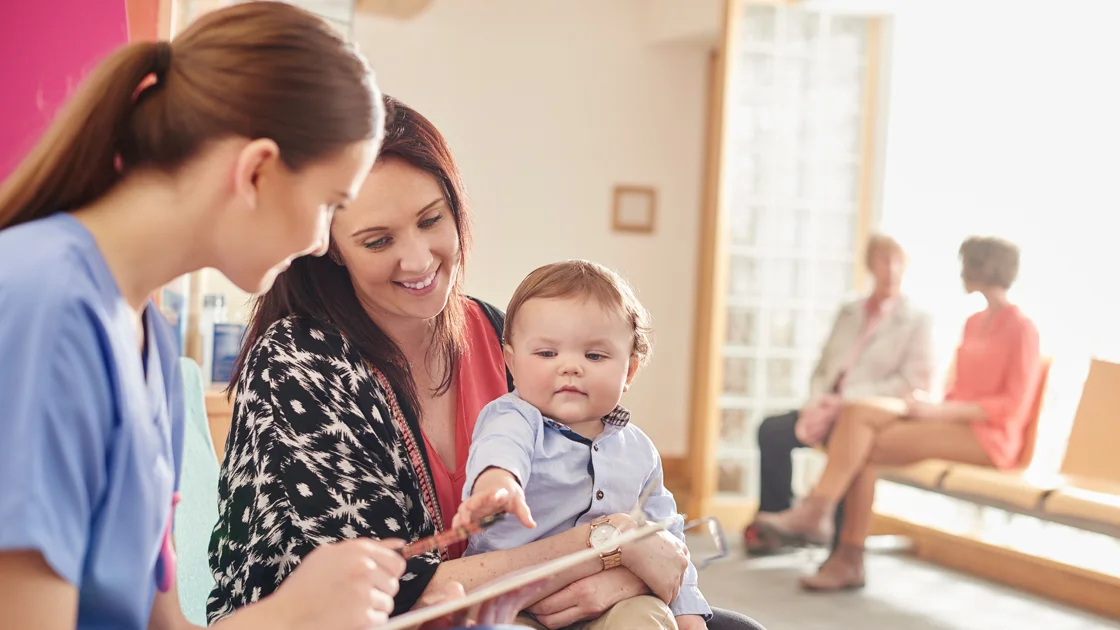At RCSEd, we are proud to support World Patient Safety Day (WPSD), a global initiative that raises awareness, brings stakeholders together and drives collective action to make healthcare safer.
This year's theme, 'Safe care for every newborn and every child', with the slogan 'Patient safety from the start!', highlights the vulnerability of children and newborns to the risks of unsafe care and the urgent need for improvement.
Building on the World Health Organisation's calls to action, from safer childbirth to medication safety, health worker safety, patient and family engagement, and diagnostic safety – World Patient Safety Day 2025 reinforces our shared commitment to eliminating avoidable harm and ensuring every child receives safe, high-quality care.
We would like to thank all contributors for their work and time to the 2025 WPSD campaign.
World Patient Safety Day 2025 Resources
Five Numbers Worth Talking About
A video helping us to prevent serious injury in kids by giving us five numbers which are worth talking about, and finding in these five numbers ways we can keep kids safe.
Dr Warwick Teague, Director of Trauma and Clinical Lead for Burns at The Royal Children's Hospital Melbourne (RCH) and the RCH Creative Studio and Health Literacy teams have brought together their amazing skills and commitment to great messaging and delivered a great package of child safety information in this partnership between RCSEd and RCH for World Patient Safety Day, 2025. Please see the introduction video below, followed by the series of short videos. We hope you enjoy!
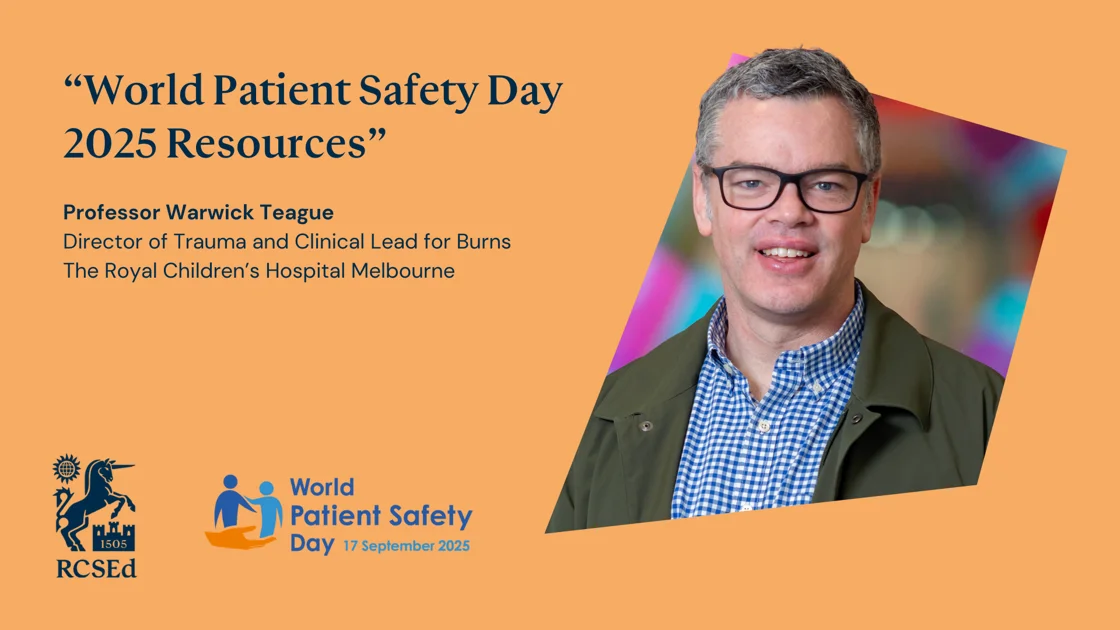
Hot Water Burns Like Fire
Learn more about scald burns in kids, as well as preventing scalds using the right cups in the right way, in this short video with Dr Warwick Teague, Director of Trauma and Clinical Lead for Burns at The Royal Children's Hospital Melbourne by clicking below.
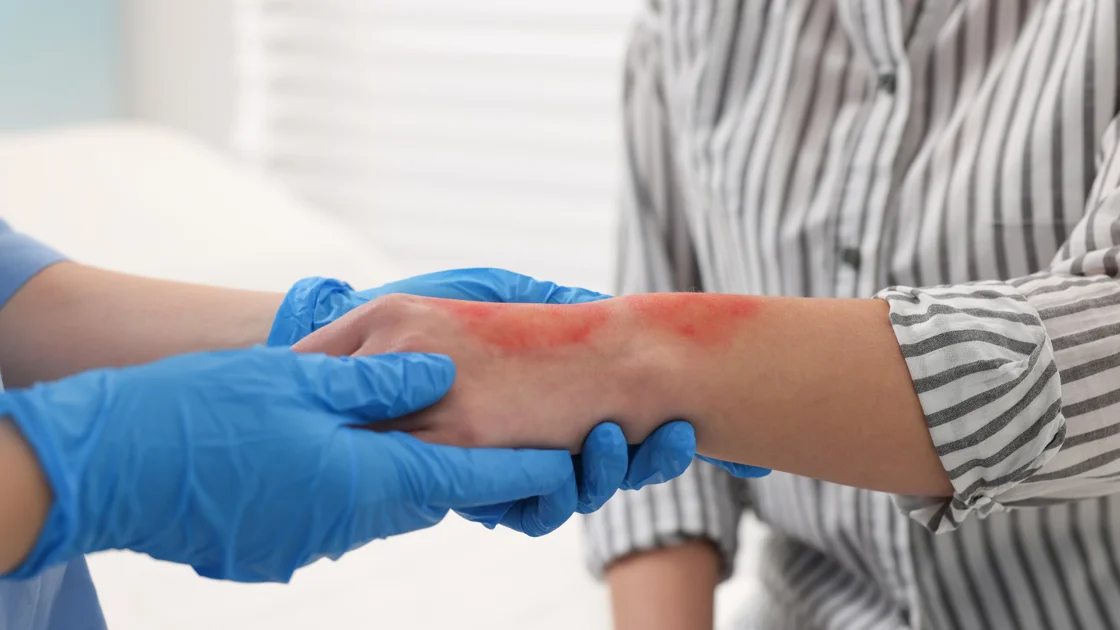
Doctor Wozza Rates Burn First Aid Suggestions
Learn more about recommended burn first aid in this short video with Dr Warwick Teague, Director of Trauma and Clinical Lead for Burns at The Royal Children's Hospital Melbourne by clicking below:
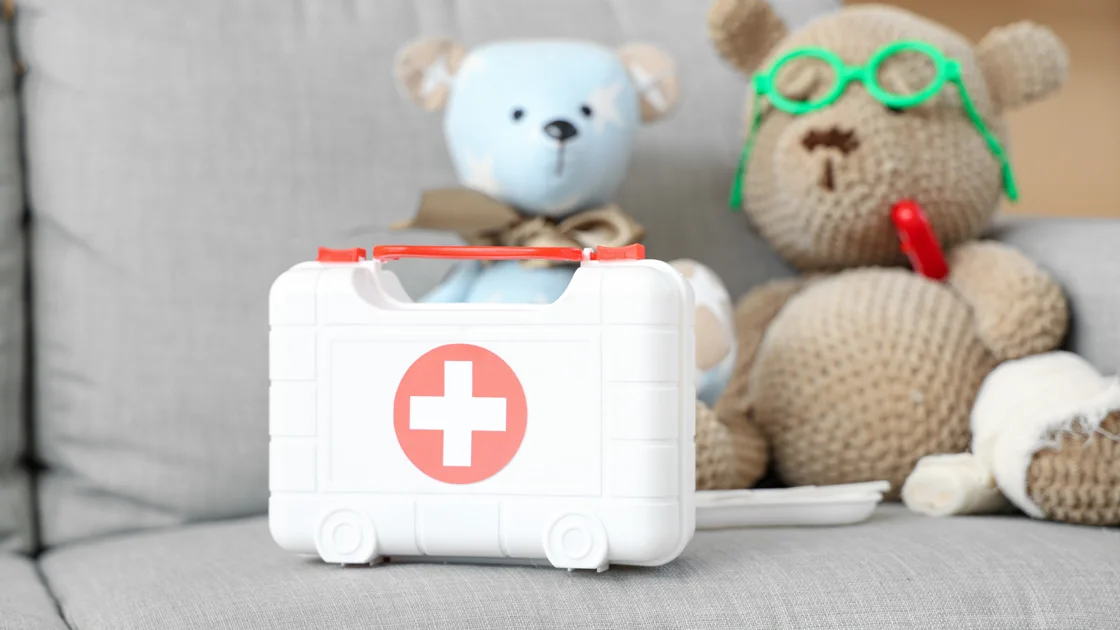
Steam Inhalation is Not Recommended
Learn more about steam inhalation and the risk in this short video with Dr Warwick Teague, Director of Trauma and Clinical Lead for Burns at The Royal Children's Hospital Melbourne by clicking below.

Treadmills and Kids Don’t Mix
Learn more about treadmill safety and risks in this short video with Dr Warwick Teague, Director of Trauma and Clinical Lead for Burns at The Royal Children's Hospital Melbourne by clicking below.

World Patient Safety Day Webinar
17 September 19:00-20:00 BST
To help celebrate this year’s WPSD, the RCSEd are hosting this webinar on the importance of system design in helping to ensure safety for neonates and children. We will hear from a panel of paediatric surgery consultants, innovators and human factors experts on how we can best design systems and built environments to help ensure safety in paediatric surgical care.
Safe Care for Every Newborn and Every Child - Designing for Child Safety Webinar
Register nowWorld Patient Safety Day Podcast
Join Claire Morgan, Consultant in Restorative Dentistry and Deputy Chair of the College’s Patient Safety Group, and Gregory Ekatah, Consultant Colorectal Surgeon and host of RCSEd’s podcast series 'Let’s Talk Surgery', as they speak with Professor Sanjiv Sharma, Paediatric Intensive Care Consultant and Chief Medical Officer at Barts Health, about his leadership journey, challenges, and reflections on WPSD 2025.
Leadership and Patient Safety Podcast
Listen nowWorld Patient Safety Day 2025 Dental Infographic
Safe dental care for every newborn and child can be explored in this infographic, “Patient safety from the start!”
Dental Infographic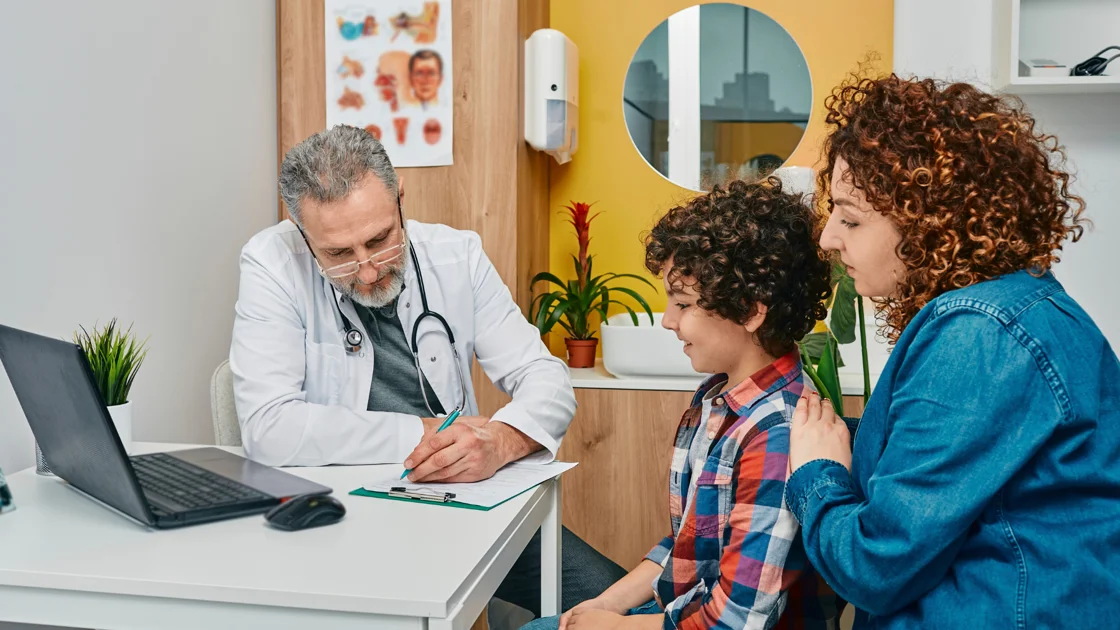
Surgical Resources
The Patient Safety Group (PSG) of the College have drawn together a comprehensive, multi-layered campaign to highlight WPSD and champion the theme of Safe Care for Every Newborn and Every Child. A wide range of resources have been developed including a webinar on Designing for Newborn and Child Safety, podcast interview with a tertiary paediatric centre leader, Surgeons News article, infographic series, recorded inspirational talk and educational vignettes, alongside a comprehensive series of surgical and dental blogs and talking head sound bites.
Read the full blog below:
This series of three blogs will provide a brief background to the World Health Organization’s (WHO) World Patient Safety Day (WPSD), discuss the theme for this year of Safe Care for Every Newborn and Every Child, highlight what the RCSEd is doing to mark this important day and run through some of the College’s current patient safety initiatives.
Read the full blog below:
WHO World Patient Safety Day 2025: safe care for every newborn and every child
This blog is aimed at introducing a number of examples of national strategies that have been launched to improve safety in healthcare for children.
Read the full blog below:
Keeping our Children Safe: national strategies to improve safety in healthcare for children
In a world where every child deserves access to safe, quality healthcare, some regions face seemingly insurmountable challenges. South Sudan, a country of over 11 million people, represents one of the starkest examples of this healthcare divide. Until recently, this young nation had not a single trained paediatric surgeon, a reality that meant countless children were either turned away from care or forced to seek treatment far from home, often at great financial and emotional cost to their families.
Read the full blog below:
Upholding patient safety and ensuring the highest possible standards of patient care have been at the heart of the College’s activity since it was founded over 500 years ago. The Patient Safety Group supports and coordinates all the College’s Patient Safety initiatives. We have a multidisciplinary membership drawn from all the faculties of the College and including representation from both the wider surgical team and patients themselves.
Read the full blog below:
Testicular torsion is a common urological surgical emergency caused by twisting of the testicle in the scrotum. This twisting affects the blood supply of the testicle putting it at risk if not promptly treated. It occurs in around 1 in 4000 males under the age of 25 each year but is most common in those aged 12 -18 years.
Read the full blog below:
Standardising and Informing Best Practice in the Conduct of Scrotal Exploration for Suspected Testicular Torsion
Breast cancer is the most common form of cancer to affect women with around 1.7 million cases diagnosed globally every year. It occurs more frequently in high income countries where a successful cure is more likely to be achieved, largely through earlier presentation and access to effective treatments. Women from low and middle income countries (LMICs) are more likely to be diagnosed at a younger age than their Western counterparts.
Read the full blog below:
The Best Care for any Newborn or Child Involves Delivering the Best Care for their Mother
I’d like to pose a question: what have we learned about building hospitals over the past 165 years? The answer is thankfully a great deal. Yet, despite this progress, we still get it wrong. The environments we create can inadvertently make working and healing more difficult than necessary.
Read the full blog below:
In 2025, World Patient Safety Day shines a spotlight on the care of neonates and children. While this focus is timely and essential, it also reveals a stark reality: in many parts of the world, particularly in low- and middle-income countries (LMICs), the concept of patient safety must be redefined.
Read the full blog below:
Patient Safety in Children’s and Neonatal Surgery: a global perspective
This year’s World Patient Safety Day focuses on Safe Care for Every Newborn and Child. As a specialty doctor in paediatric surgery, I am acutely aware of how vulnerable this patient group is to risks arising from unsafe care. Newborns and children often rely entirely on the vigilance and advocacy of their healthcare teams, and the consequences of errors can be profound.
Read the full blog below:
Patient Safety From the Start: how SAS/LED surgeons can lead from the front
The Patient Safety Incident Response Framework (PSIRF) represents a huge shift in how we learn about safety incidents in our organisations. Moving away from the blame-focused culture of the past, PSIRF fundamentally changes our approach from asking "Who did what wrong?" to "How did our system allow this to happen?"
Read the full blog below:
What Have We Got Left to Learn About Safety in Paediatric Surgery?
Head injury in children is one of the leading causes of death and disability worldwide. In high-income countries, public health and prevention policies, advances in trauma care, imaging, and neurosurgery mean many children can survive serious injuries with good outcomes.
Read the full blog below:
Paediatric Head Injury: a Global health challenge with stark inequalities
Hydrocephalus is a condition where fluid builds up within the brain, and it is one of the most common neurosurgical problems worldwide, particularly in children. While modern treatment allows many children in high-income countries to grow up healthy and active, the story is quite different in underprivileged populations.
Read the full blog below:
Neonatal Hydrocephalus: the importance of early diagnosis and management in a global context
The oesophagus, stomach and small bowel in newborns and young children is much thinner and more fragile making it more susceptible to damage from NG tube insertion. A delicate, careful technique with a high index of suspicion for malposition and upper gastrointestinal perforation is essential.
Read the full blog below:
Top Patient Safety Tips for Resident Doctors in Paediatric Surgical Practice
When children are unwell, there is understandable concern and worry. In paediatric surgery, our patients range from neonates to teenagers, and along with our patients we meet those close to them - parents; grandparents; siblings and carers.
Read the full blog below:
Parent and Carer Insight in Paediatric Surgery: an essential data point
In paediatric surgery, our patients are not only vulnerable due to their age but also due to the complexity and acuity of their conditions. Continuity of care is, therefore, paramount. Among the various factors that influence outcomes, clinical handover is a key determinant of patient safety.
Read the full blog below:
Effective Handover - an important patient safety tool in paediatric surgical specialities
Lasers are concentrated beams of light and they are common everyday items, they are now found in printers, supermarket scanners, children’s toys and laser pointers. Laser pointers are readily available to buy online from Amazon and eBay at a very low cost, however judging the strength and safety of the laser pointer in your child’s hand isn't simple.
Read the full blog below:
Lasers Aren’t Toys: preventing injuries and protecting children’s eyes
The surgical safety of paediatric patients can begin from the neonatal period, with collaborative work with paediatric and neonatal colleagues. Neonatal intensive care made incredible strides throughout the 20th century, with huge increases in the survival of premature babies.
Read the full blog below:
Sensorineural hearing loss affects one in a thousand newborn children. Audiology teams are key to the management of these patients, with ENT surgeons, paediatricians and audiovestibular physicians playing a crucial role in the understanding of the aetiology of hearing loss.
Read the full blog below:
Fundamental of patient safety is to avoid unnecessary operations. It's well recognized with developmental dysplasia of the hip (DDH) that early detection will mostly result in successful conservative treatment and avoid surgery. As an example. this blog looks at the infants in Northern Ireland, who had dislocated or unstable hips.
Read the full blog below:
Auditing Services for Developmental Dysplasia Hip Reduces Need for Surgical Intervention in Children
Women of child bearing age may experience several health related issues during pregnancy. Whilst the majority of presentations may be a direct consequence of the pregnant state, nonetheless, they can experience other unrelated illnesses.
Read the full blog below:
Safety Considerations for Managing Intra-abdominal Conditions in the Pregnant Surgical Patient
World Patient Safety Day, observed annually on 17 September, this year promotes the theme “Safe care for every newborn and every child”, with the slogan “Patient safety from the start!”. It is timely reminder that every young person throughout childhood deserves unwavering protection from avoidable harm. This focus on patient safety extends into adolescence and beyond through the critical inflection point when care is transferred to adult services.
Read the full blog below:
Bridging the Gap: ensuring safe transfer of urological care for young patients
This blogs explains why a cleft palate should be identified at birth, how it can be identified and what the problems are with late detection. We aim to provide a perspective from the UK and low and middle income countries such as Nepal and Ethiopia.
Read the full blog below:
Dental Resources
'Patient safety from the start!', the theme for World Patient Safety Day 2025 is a timely reminder that protecting the health of children means looking beyond the obvious. While medical and surgical safety often takes centre stage, oral health is too often sidelined, despite its profound impact on a child’s recovery and wellbeing.
Read the full blog below:
Mini Mouth Care Matters: prioritising oral safety from the start
Whilst raising the profile of patient safety through a dedicated day is important, patient safety in dentistry is, of course, an everyday topic of crucial importance to firstly our patients, but also to our profession and thirdly to regulators. Patient safety is at the core of everything we do at The Royal College of Surgeons of Edinburgh so, what better topic for my blog this month than patient safety for every newborn and every child.
Read the full blog below:
Patient Safety in Oral Health for Every Newborn and Every Child
Each year on World Patient Safety Day, we are reminded of the need to keep safety central to all aspects of healthcare. This includes ensuring that patients with complex medical needs, especially children with developmental bleeding disorders can access safe, planned dental care.
Read the full blog below:
Safe and Effective Dental Care for Children with Bleeding Disorders
In 2015, Public Health England (PHE) published an evidence summary exploring the relationship between dental caries and obesity. This review analysed local authority-level data from cross-sectional surveys conducted by the National Dental Epidemiology Programme and the National Child Measurement Programme.
Read the full blog below:
Are We Doing Enough to Prevent an Oral Health and Obesity Crisis in Children?
Injuries to the teeth and mouth are not uncommon and can a have lasting impact on a child’s quality of life, especially when not managed safely and promptly. Thinking about ‘patient safety from the start!’, including dental trauma in these conversations is paramount and simply put, can help save a smile.
Read the full blog below:
The growing demand for paediatric dental treatment, combined with significant delays in access to general anaesthetic (GA) services, has created a pressing need to expand alternative, safe, and effective sedation pathways for adolescents aged 12 to 16.
Read full blog below:
Enhancing Patient Safety and Access: the role of intravenous sedation in adolescent dental care
Good oral health is important for all children as it supports their overall health, development and well-being. Poor oral health can lead to pain, infection, difficulties eating, sleeping, missed school days and poorer quality of life. Currently, removal of decayed teeth is the most common reason for a six-to-ten year- old child to be admitted to hospital in England.
Read the full blog below:
Prior to 2021 wrong tooth extraction (WTE) according to NHS England’s wrong site surgery data, was the highest recorded ‘Never Event’. Wrong tooth extraction was removed from the Never Event list in 2021 on the grounds that systemic barriers were not strong enough to prevent this patient safety event, a requirement to meet the definition of a Never Event.
Read the full blog below:
Keeping our Children Safe: reducing the risk of wrong tooth extraction in children
Educational Resources
Many surgeons operate on children as part of their role, but how many have had specialist training in generic paediatric skills to manage their care in the most effective way?
Read the full blog below:
The sick neonate poses many challenges for all involved in their care. To ensure safe surgery for this patient group, the surgeon’s fine motor skills must be well developed and honed. The fragile nature of these patients means careful tissue handling is vital to ensure that operations are carried out with a certain delicacy and precision of movement.
Read the full blog below:


